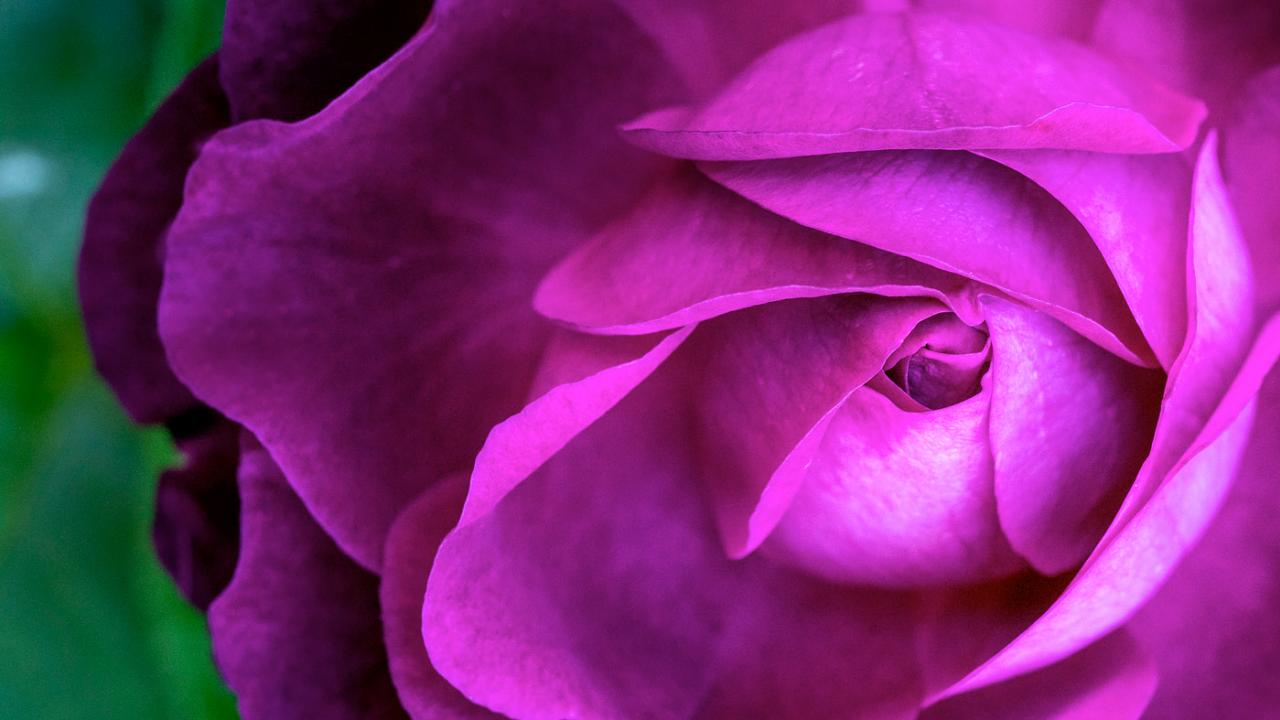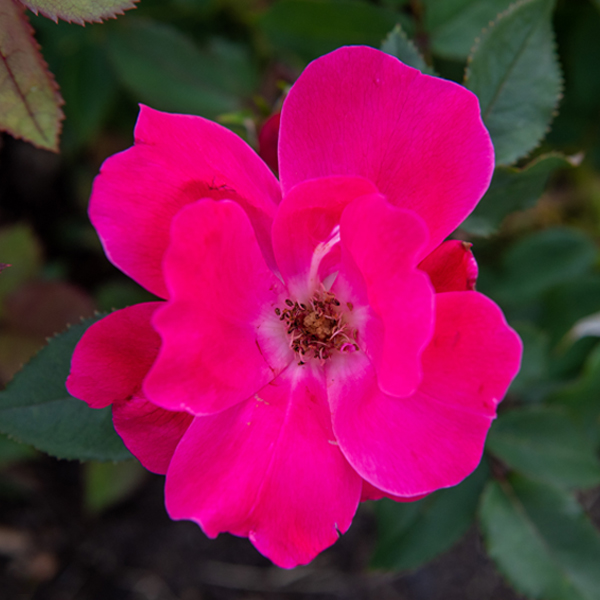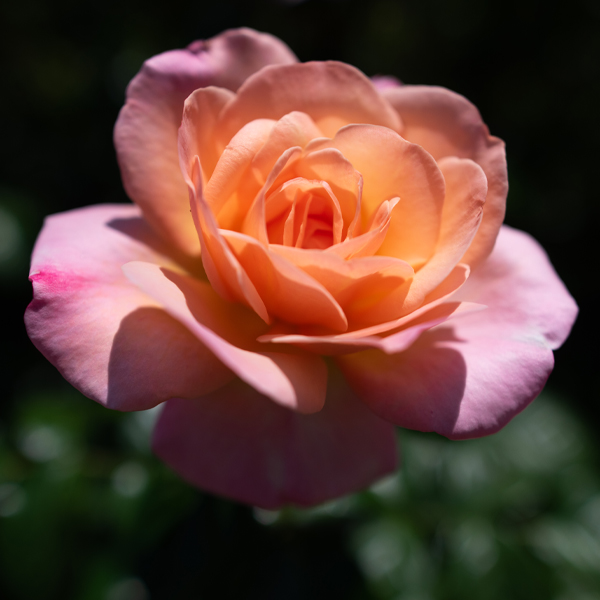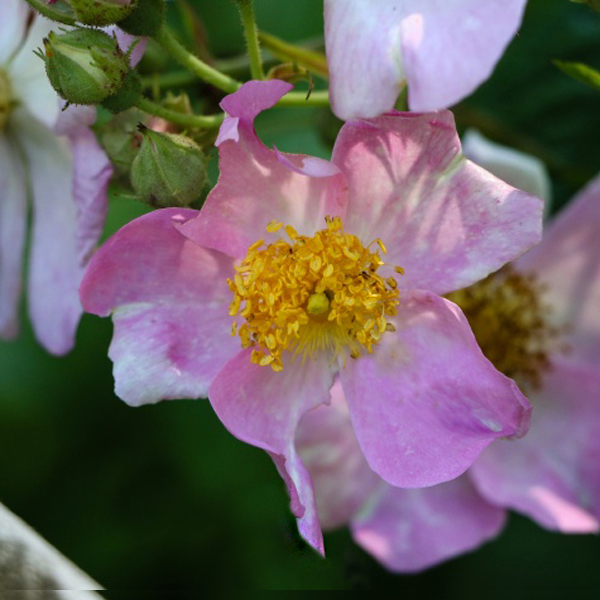

Busting Myths About Roses
As far back as ancient Greece, roses were considered the “queen of flowers.” Maybe that’s why they’ve acquired a certain, shall we say, diva persona.
No question, roses possess star power. And yet, like any garden-variety diva, they’ve attracted bad press—too temperamental, not playing nicely with others, demanding way too much attention.
Tom Soulsby, the horticultural impresario of roses at the Chicago Botanic Garden, would like to debunk the unfair rumors swirling around the Rosaceae family.
“Our goal of presenting plants at the Garden is to disabuse everyone of the myths out there that roses are hard,” says Soulsby, senior horticulturist for the Krasberg Rose Garden, Heritage Garden, and Linden Allée. “Over a couple decades ago, the industry started moving toward more sustainable roses, and right now that’s what all the rose breeders are shooting for.”

Krasberg Rose Garden
For your spring inspiration,
here are myths he is busting
Myth 1: Roses are too much work.
That might have been true 20 years ago, but not anymore. “Today, people are looking for roses that are easy to grow, easy to maintain, hardy, disease-resistant, but still have great flowers, smell great—the holy grail of what you want in a rose,” Soulsby says.
It began with the Knock Out® rose, introduced in 2000 by plant breeder William Radler (who, by the way, is the Garden’s consulting rosarian). “It transformed the market in terms of disease-resistance and winter hardiness,” Soulsby said. In fact, roses were acquiring a has-been status when Knock Out® debuted and helped reinvigorate interest in buying and growing roses again.
What’s more, Knock Out® and the subsequent roses that followed are hard-working repeat bloomers, putting on a show throughout our zone 5b and 6a growing season. Many don’t require winter protection, either. And they’re extremely resistant to disease.
Myth 2: To grow roses, you have to use a lot of chemicals.
A black spot on roses’ reputation is their susceptibility to, yes, black spot, the fungal disease that infects the leaves and canes. In the past, it was a death sentence unless you constantly applied pesticides.
Today’s generation of roses are bred to fight black spot. “They don’t need any, or as much, spray to maintain a typical year’s disease-resistance,’ Soulsby said.
He cautioned that resistance is different from being 100 percent disease-proof. But it’s also worth noting that many of the new roses in the Garden’s collection are being evaluated under no-spray conditions.
Myth 3: Roses don’t belong in native gardens.
Roses have roots in midwestern soil, right alongside purple coneflowers (Echinacea spp.) and prairie dropseed (Sporobolus heterolepis). Illinois rose (Rosa setigera), swamp rose (R. palustris) and Carolina rose (R. carolina) are just three varieties that, although rarely sold in garden centers, can be found at native plant sales as well as from retailers specializing in native plants.
They’re different from ornamental roses in their simpler, single-layer blooms, which typically appear just once in the growing season (as with many perennials). These local divas deserve an audience, too.
“They’re not as ornamental,” he said, “but they’re easy to care for, super-hardy, and they’re generally resilient to anything you throw at them.”
Myth 4: If all you’ve got is a patio or balcony, you’re out of luck.
Many new rose varieties perform beautifully in containers for small, sunny stages—er, spaces.
“It’s a fine way to present roses,” Soulsby said. “Most of the new roses are reliable bloomers, with a big flush in June, lots of repeat blooming through the summer, and then another peak flush around September.”
Container roses are overwintered at the Garden, but for small-space gardeners, enjoying roses for a season’s worth of beauty can be a worthy investment. Just remember that pots dry out faster than garden beds, so check moisture levels.
Myth 5: Roses are stage hogs.
The idea that roses require a dedicated garden is an antiquated one, Soulsby said. In fact, roses make wonderful ensemble players in a landscape design.
“Using roses as an integrated plant in a perennial border, rather than treating them as a stand-alone entity, is a design approach that would make people happier,” he said. “Roses can be a natural part of a border that includes other perennials and other shrubs.”
This works for many reasons. The roses’ repeat blooms can complement the ebb and flow of the other plants, and vice versa. There’s winter interest, too.
“People also forget that a lot of roses, especially larger shrub roses, have nice structure even during the winter,” Soulsby said.
Another boon to this approach: It takes pressure off the rose, and allows this superstar to shine.
Where everything’s coming up roses
More than 5,000 roses put on a show from May through the fall at our three-acre Krasberg Rose Garden. More than 60 percent of them are hardy to the area without the need for winter protection.
Six roses with star power
Tom Soulsby, senior horticulturist for the Krasberg Rose Garden, puts a spotlight on these rose varieties. All are hardy to our area, disease-resistant, and, unless noted, bloom repeatedly throughout the growing season. If you can’t find them at garden centers, check out online retailers.
The Knock Out®
The shrub that helped roses regain national attention and launched a slew of worthy competitors. Introduced by William Radler, this rose shrub now boasts 13 varieties of various colors and sizes, including a petite introduction. A new shade for 2024 is Orange Glow™ Knock Out®.
Drift®
The versatile Drift® series, described as a cross between full-size ground cover roses and miniature roses, can work in a garden or container. There are currently 11 varieties.
Bright & Shiny™
This rose, also bred by Radler, shows off a cavalcade of colors: apricot-orange mixed with yellow and finished off in light pink. It also emits a light fragrance.
Illinois rose (Rosa setigera)
This native rose with pretty pink blooms is also known as 'Climbing Rose'. “Setigera is more of a rambler, which I use as a quasi-climber in parts of the Garden,” Soulsby said. Because it is large and fast-growing, it’s best for bigger spaces. It blooms in June and July.
Above and Beyond™
Soulsby is excited about this ornamental, light-orange colored climbing rose. “Climbers have been historically fussy in our area,” he says, because they die back each winter and force gardeners to train their roses all over again come spring. “This rose has cane hardiness and root hardiness. We’ve been experimenting with a lot of climbers, and Above and Beyond™ is the clear winner so far.”
Canadian roses
Canadian roses are gorgeous and tough—but not well-known in the U.S. market. Two varieties that Soulsby and his team have been working with are Canadian Shield® and Chinook Sunrise®. “They’re from Canada’s national breeding research program,” he says. “They’re very hardy, because they were bred for Canadian winters.” Shield® has deep red flowers with over 40 petals; Sunrise’s® blooms are coral-colored in the middle and light pink as petals expand.




